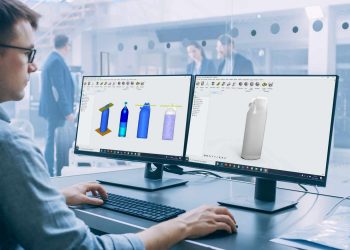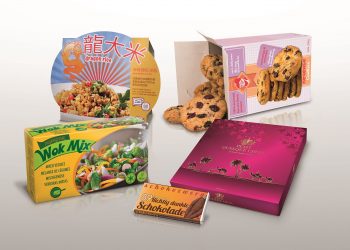Many brands are already familiar with SKU rationalization as a business tool, but may not know they can use a similar process to find cost savings in the packaging operation. The familiar process generally involves a merchant evaluating a product’s profitability to determine if they should keep it on shelves. Generating cost savings through Packaging SKU rationalization is a bit different. It’s a process of reducing the number of packaging SKUs by evaluating the dimensions and other characteristics of a finished package.
Packaging SKU rationalization can drive cost savings opportunities in a few different ways.
- It may allow a brand to consolidate its packaging material suppliers and purchase fewer structures and sizes.
- It may provide an opportunity to reduce the amount of packaging material inventory it needs to keep on hand. Reducing the number of packaging SKUs helps a brand to better utilize its warehouse space.
- It also enables a brand to optimize asset utilization across manufacturing and packaging facilities.
When to Conduct a Packaging SKU Rationalization
This process can be helpful at any time, but it is most helpful in a situation where several packaging SKUs share similar dimensions or other specifications. This may happen when a company acquires new product lines, especially if they are similar to other products in the brand’s portfolio, as well as when one company acquires another with similar products. A less common situation in which this process may be useful is when a packaging group inherits responsibilities for packaging products that were not previously in their purview. Regardless of the reason, companies with products that require similar packaging are a good fit for this type of project. Reducing the number of packaging SKUs provides a variety of opportunities to optimize the brand’s packaging spend and drive cost savings.
Steps of a Packaging SKU Rationalization
The steps your brand should take during a packaging SKU rationalization differ depending on your situation. As such, we’ve broken down the steps for two scenarios, one in which the brand consolidates its packaging formats by grouping SKUs that share similar dimensions and one in which the brand consolidates by grouping SKUs that share similar material structures.
An important note to keep in mind is that you don’t need to start with the first step in these lists and work through to the last one. Think of this process as more of a cycle in which a brand can start at a few different steps and work its way through the rest of the steps in order, depending on current circumstances and what information is readily available.
Brands looking to consolidate packaging SKUs based on their similar dimensions should:
- Build lists that indicate which product groups offer the most opportunity for consolidation based on their similarity of package sizes. Look across your brand’s product line(s) and develop an understanding of which packages already feature similar dimensions or could share package dimensions based on the size of the products and their packaging needs.
- Group together products that share similar distribution environments. While it is helpful to reduce the number of packaging SKUs, it would be unwise to combine a package for a product that requires refrigeration with a product that ships at an ambient temperature.
- List all products that are good candidates for packaging SKU consolidation with their packaging dimensions and net weights.
- Review this list and group packages with dimensions and net weights that are very close to each other.
- Determine where material dimension consolidation will have its greatest impact.
- Consider roll width and cutoff length. For pouches, it is much easier to change the packaging for one product based on cutoff length than it is to change the packaging based on roll width. For cartons or cases, it may be easy to match different products by their footprint (length and width) and then decrease the height of one to match the other.
- Evaluate how utilization of filling lines can be optimized by combining products on the same filler. Consider how changes can produce the greatest benefit. Perhaps items can be packaged more efficiently by running them on the same filling line.
- Leverage the information gathered in the other steps to decide which packages offer the best opportunities to consolidate.
- Consider the impact of changing the package dimensions for a product on its downstream packaging and distribution process. Think through the entire distribution environment and make sure the changes won’t have significant drawbacks at later stages.
For brands looking to consolidate packaging SKUs based on similar material structures – for example, pouches that use the same material or cartons that use the same type of paperboard:
- Build lists that indicate which products feature similar packaging formats and materials. You want to identify products for which packaging has similar needs in terms of structure and barrier properties.
- Group together products that require similar packaging characteristics, for example, dry snack foods that need the same type of barrier materials in their pouches.
- Evaluate barrier properties such as tear and stiffness characteristics, polymer structures for bags, or compression strength for boxes. Focus on the functional packaging needs for the product.
- Evaluate additional characteristics such as package appearance and openability. Think about how the packaging is used, along with how and where it is displayed at a retail location to help you group package SKUs together.
- Examine similar products that have significantly different packaging material specifications. The packaging for one product may offer the appropriate amount of protection while the packaging for a similar product may offer significantly more protection than it needs.
- Leverage the information gathered in the other steps to decide which packages offer the best opportunities to consolidate.
- Consider the impact of changing the package dimensions for a product on its downstream packaging and distribution process. Think through the entire distribution environment and make sure the changes won’t have significant drawbacks at later stages.
Securing Alignment
Once you’ve completed this process, it is also very important to align with a high-level executive who can champion your project and influence decision makers in other departments. For changes to primary packaging that will be displayed on store shelves, you will need buy-in from marketing and sales.
While cost savings is almost always an outcome of the packaging SKU rationalization process, there are upfront costs, and you may need help convincing decision makers that the company will see a return on this investment.
Notable upfront costs include designing new graphics for the packaging, potential changes to packaging machinery and the labor involved in commercializing a new package size or package type. Something about the complexities and challenges of a packaging SKU rationalization project and the need for guidance from an experienced hand.
The broad strokes of a packaging SKU rationalization are fairly straightforward, but each brand has its own packaging portfolio and its own unique complexities, and the dual challenge of both is evaluating that portfolio. Securing buy-in for your proposed solution may require an experienced hand to guide the process. If you’d like to discuss the potential for cost savings from consolidating your packaging portfolio and how to best create alignment around your packaging goals, get in touch. The Adept Group team has helped many brands like yours successfully complete this process, and we’re ready to help you.
For more information on packaging SKU rationalization projects, check out our recent Learning Share webinar on the topic.
The Adept Group delivers best in class consulting, talent, digital and value optimization solutions for the packaging world. With specialized teams focused on each of those areas, Adept Group has assembled the top experts in the packaging industry to help companies reduce risk, increase speed to market, optimize cost, and transform the value of packaging.
The Group works with the top brands in the Food & Beverage, CPG, Pharmaceutical and Medical Device industries to deliver the specialized expertise they need to supplement their teams.







